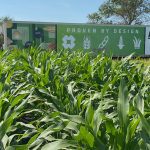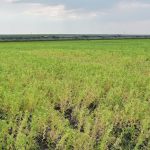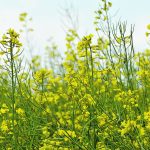Tag Archives crop disease

Field scouting advised for physiological leaf spot
Producers should check for pathogen or physiological factors in order to determine disease severity in winter wheat fields

Get the most from fusarium head blight risk maps
Fusarium head blight forecasts offer key information when Manitoba farmers are trying to decide whether they need to apply fungicide against the disease in their 2025 cereal crops

Experts doubt FBI’s claim that crop fungus smuggled by Chinese students is a threat

Managing diseases in alfalfa
From seedling issues to stand die-off, understanding the timing and symptoms of alfalfa diseases can help protect yield

Corn has come a long way over the past 9,000 years
Practical Research: The fusarium we see in small cereal grains is the anamorph of the pink mould seen in corn

Fungicide, glyphosate don’t hurt your hard red wheat quality

Researchers scramble to understand verticillium in Canada
Disease is a relative newcomer to Canada and has been the subject of little research globally

Canola and pulse diseases saw the usual culprits in 2024
Prevalence, incidence and severity numbers must all be taken into account to determine how much worry a disease should prompt
This year’s growing conditions threw many challenges at producers, one of the biggest being crop disease. Pulses and canola were hit hard, seeing high numbers of fields with disease across Saskatchewan. Root rot and blackleg had an average of more than 90 per cent prevalence, while mychosphaerella/ascochyta complex and anthracnose weren’t far behind. Alireza Akhavan, […] Read more
Sask. canola group makes crop disease its major focus
SaskCanola amalgamated with the Saskatchewan Flax Development Commission this year to become SaskOilseeds
Free disease testing for farmers, field training days for agronomists and farmer-conducted on-farm research trials were the focuses of SaskOilseeds this past year. Research manager Doug Heath outlined the organization’s 2024 activity at Canola Week, held Dec. 3-5 in Saskatoon and online. ”We work on behalf of canola and flax farmers to fund crop research, […] Read more



